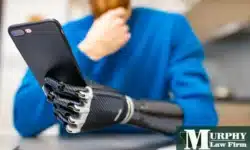The Medical-Vocational Guidelines (known as the “grids”) can sometimes be used as a basis for a disability decision for a claimant who cannot work. The Grids are contained in Appendix 2 to Subpart P of Part 404.https://www.ssa.gov/OP_Home/cfr20/404/404-app-p02.htm. Grids combine a claimant’s residual functional capacity, age, education, and work experience to evaluate the claimant’s ability to perform substantial gainful activity.
For example, if a claimant is age 50 or older, is limited to sedentary work, has an education that does not provide direct entry to skilled work, and does not have skills transferable to sedentary work, the claimant will “Grid out” as disabled (See Rule 201).
Similarly, if a claimant is age 55 or older, is limited to light work, has an education that does not provide direct entry to skilled work, and does not have skills transferable to light work, the Medical-Vocational Guidelines direct a finding of disabled (See Rule 202). Claimants who are age 55 and older have a good chance of proving disability under the Medical-Vocational Guidelines as long as the claimant has not performed sedentary or light duty work.
The application of these rules sometimes results in partially favorable findings, wherein the Social Security Administration finds the claimant disabled, but only as of the claimant’s 50th or 55th birthday. There are many specific rules about how the Social Security Administration deals with borderline age situations (generally when a claimant is within 6 months of attaining age 50 or age 55).
If you cannot perform your past work, you are over age 50 and limited to sedentary work, or over age 55 and limited to light work, you should consult Murphy Law Firm about a potential Social Security Disability claim. Find us on our website (https://murphylawoffice.net) or call us at (406) 452-2345.



